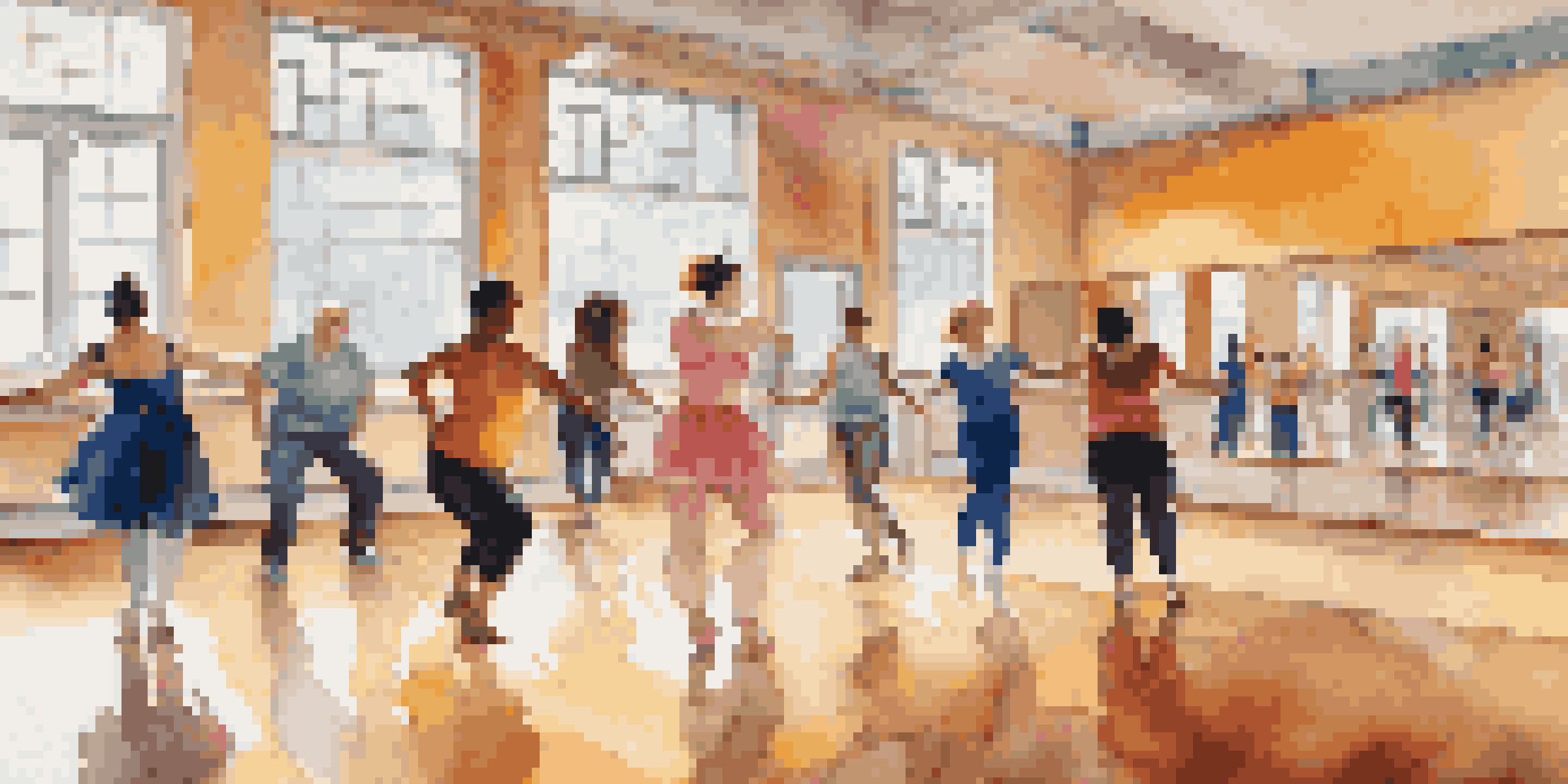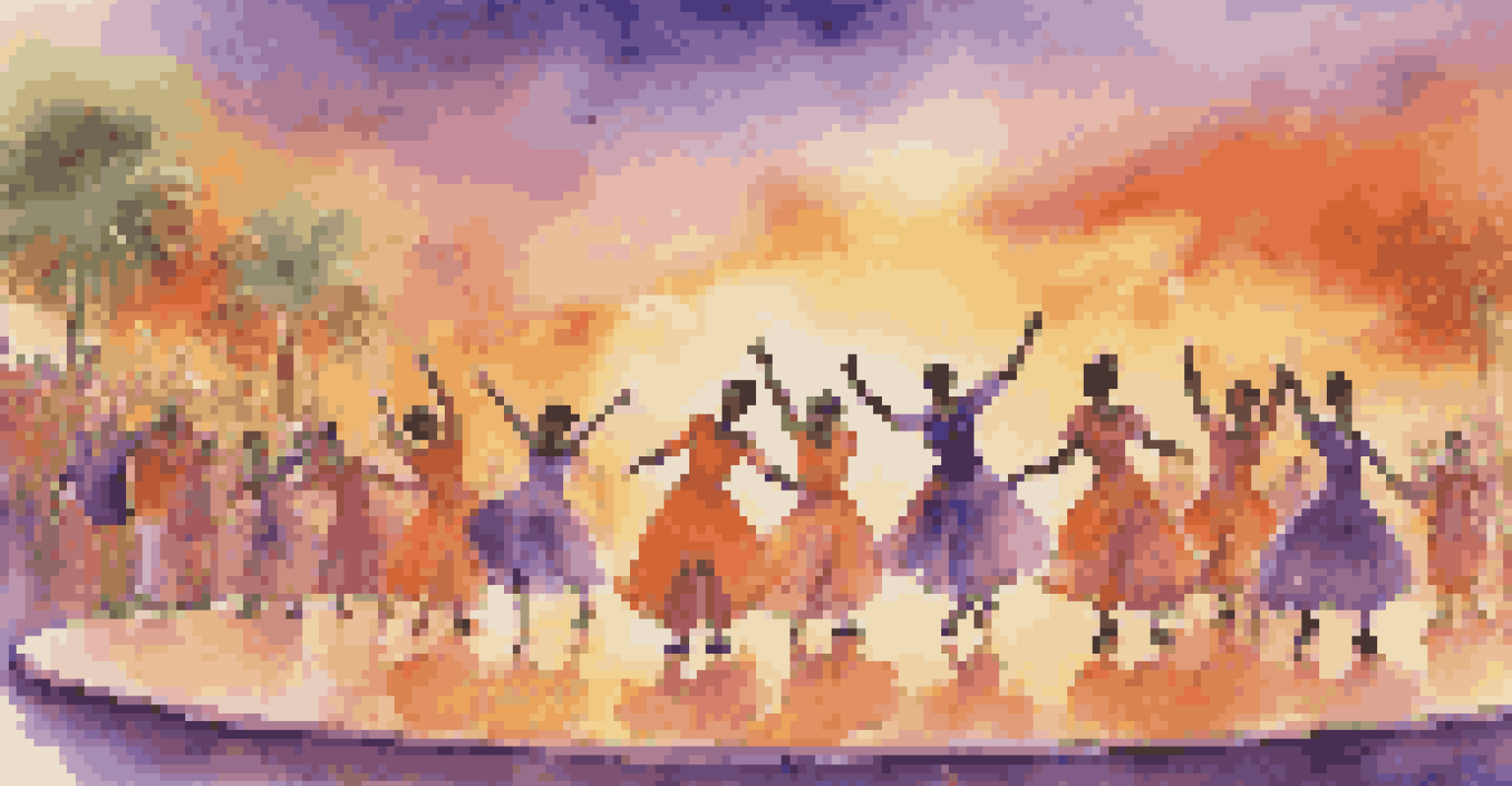Understanding the Needs of Disabled Dancers in Performance

The Importance of Inclusivity in Dance Performance
Inclusivity in dance not only enriches the art form but also opens doors for talented individuals who might otherwise be overlooked. When we embrace dancers with disabilities, we create a more diverse and vibrant artistic landscape. This inclusivity encourages creativity and innovation, pushing the boundaries of traditional dance.
Diversity is not a reason to fear, but a reason to celebrate. It strengthens our communities and enriches our lives.
Moreover, inclusivity fosters community and understanding among performers and audiences alike. It allows everyone to connect with the art on a deeper level, celebrating the unique stories and perspectives each dancer brings. When disabled dancers participate, they inspire others and challenge stereotypes about what dance can be.
Ultimately, prioritizing inclusivity in dance performances is a step toward equality in the arts. It sends a powerful message that everyone deserves a platform to express themselves, regardless of their physical abilities. This approach not only enhances the performance experience but also promotes broader societal change.
Understanding Different Types of Disabilities
Disabilities can range widely, impacting dancers in various ways. Physical disabilities may affect mobility, while sensory impairments can alter how dancers interact with music and choreography. Understanding these differences is crucial for creating an accommodating performance environment.

For example, a dancer with limited mobility may require specific adaptations to traditional dance techniques, such as the incorporation of wheelchairs or other assistive devices. In contrast, a dancer with hearing impairments might benefit from visual cues or sign language in choreography. Recognizing these needs allows for more tailored support.
Inclusivity Enhances Dance Artistry
Embracing inclusivity in dance fosters creativity, innovation, and a richer artistic landscape.
By actively learning about the spectrum of disabilities, dance companies can foster a more inclusive atmosphere. This knowledge helps to break down barriers and empowers all dancers to shine on stage, showcasing their talent in ways that resonate with the audience.
Creating Accessible Dance Spaces
Accessibility in dance studios and performance spaces is vital for disabled dancers to thrive. This includes physical access, such as ramps and wide doorways, but also extends to the availability of appropriate facilities like restrooms and changing areas. A truly accessible space promotes independence and confidence among dancers.
The beauty of dance is that it can be expressed in countless ways. Everyone has a story to tell, and every body has a dance to share.
Additionally, the environment should be adaptable, with adjustable lighting and sound systems that cater to various needs. For instance, dancers with visual impairments may require high-contrast settings to navigate effectively. A well-designed space considers all dancers' needs, ensuring everyone can participate fully.
Creating accessible dance spaces goes beyond compliance with regulations; it reflects a commitment to inclusivity and support. This investment not only benefits disabled dancers but also enriches the entire dance community, fostering a culture of respect and understanding.
Adapting Choreography for Disabled Dancers
Choreography is at the heart of dance, and adapting it for disabled dancers is essential for their participation. This can involve modifying movements, simplifying sequences, or incorporating assistive devices into the choreography. Such adaptations can enhance the performance while highlighting the dancer's unique abilities.
For example, a choreographer might work with a dancer who uses a wheelchair to create movements that showcase their skills rather than hinder them. This collaboration can lead to innovative choreography that challenges traditional notions of dance. It’s an opportunity to explore new artistic expressions.
Accessibility is Key for Participation
Creating accessible dance spaces ensures that all dancers can participate fully, promoting independence and confidence.
Moreover, adapting choreography fosters creativity and collaboration within the dance community. It encourages all dancers, regardless of ability, to contribute ideas and insights, resulting in a richer and more dynamic performance. Embracing these adaptations turns challenges into opportunities for growth.
The Role of Assistive Technology in Dance
Assistive technology plays a significant role in supporting disabled dancers in their artistic expression. From specialized dance shoes to adaptive devices that enhance mobility, technology can bridge gaps and empower dancers to perform confidently. This integration of tech can transform the way disabled dancers engage with their art.
For instance, devices like dance wheelchairs or harnesses can help dancers achieve movements that might otherwise be difficult or impossible. These tools not only ensure safety but also expand the dancer's creative possibilities. The right assistive technology can be a game-changer in performance quality.
As technology continues to evolve, so too does the potential for innovation in the dance world. By embracing these advancements, dance companies can create more inclusive environments that support diverse talents. It’s a beautiful synergy between art and technology that enhances the overall performance experience.
Fostering a Supportive Dance Community
A supportive community is crucial for disabled dancers to thrive both on and off the stage. This means creating an environment where dancers feel valued, understood, and encouraged to express themselves. Building this sense of community starts with open communication and empathy among all participants.
Mentorship programs can also play a significant role in fostering support. Experienced dancers can guide and inspire those who are newer or facing challenges, creating bonds that enrich the dance experience. Such relationships promote growth and build a foundation of trust and respect.
Representation Inspires Future Dancers
Showcasing disabled dancers in performances challenges stereotypes and inspires future generations to pursue their passion for dance.
Ultimately, a supportive dance community empowers disabled dancers to pursue their passions fearlessly. It encourages collaboration and shared experiences, leading to performances that resonate deeply with audiences. When dancers lift each other up, the entire art form flourishes.
Showcasing Disabled Dancers in Performance
Highlighting disabled dancers in performances is essential for promoting visibility and representation. When audiences see disabled performers taking the stage, it challenges preconceived notions about ability and talent. This visibility is a crucial step toward breaking down barriers in the dance world.
Moreover, showcasing diverse talents can inspire future generations of dancers with disabilities. It sends a powerful message that they, too, can pursue their passion for dance and find their place within the community. Representation matters, and it creates a ripple effect that extends far beyond the performance.

By actively promoting performances featuring disabled dancers, companies can cultivate a culture of inclusivity and acceptance. This commitment to representation not only enriches the artistic landscape but also fosters a sense of belonging for all dancers, ensuring that everyone has a voice.